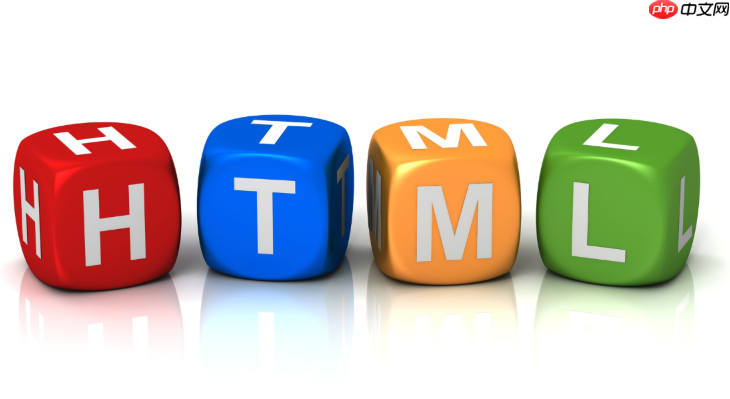答案:设计HTML5搜索框需用<input type="search">实现语义化,结合CSS美化与JavaScript增强交互。通过enterkeyhint、autocapitalize等属性优化移动端体验,添加搜索图标、聚焦效果提升视觉吸引力,确保可访问性与响应式布局,全面提升用户体验。

设计一个HTML5搜索框,核心在于利用
<input type="search">
要设计一个基础且功能完备的HTML5搜索框,我们首先从语义化的HTML结构开始。
type="search"
一个基本的HTML结构可能看起来是这样:
<div class="search-container">
<input type="search" id="mainSearchInput" name="q" placeholder="搜索站内内容..." autocomplete="off" enterkeyhint="search">
<!-- 也可以在这里添加一个搜索按钮,或者通过JS监听回车事件 -->
<button type="submit" aria-label="执行搜索">搜索</button>
</div>这里,
id
name
placeholder
autocomplete="off"
enterkeyhint="search"
立即学习“前端免费学习笔记(深入)”;
接下来是基础的CSS样式,让它看起来不那么“原生”:
/* 容器样式,方便布局 */
.search-container {
display: flex; /* 让输入框和按钮并排 */
width: 100%;
max-width: 500px; /* 限制最大宽度 */
margin: 20px auto;
border: 1px solid #ccc;
border-radius: 25px;
overflow: hidden; /* 确保子元素圆角效果 */
}
#mainSearchInput {
flex-grow: 1; /* 输入框占据剩余空间 */
padding: 10px 15px;
border: none; /* 移除默认边框 */
font-size: 16px;
outline: none; /* 移除聚焦时的蓝色边框 */
background-color: transparent; /* 确保背景透明,与容器一致 */
}
/* 针对WebKit浏览器的原生清除按钮 */
#mainSearchInput::-webkit-search-cancel-button {
-webkit-appearance: none; /* 移除默认样式 */
/* 可以在这里自定义清除按钮的样式,例如背景图片等 */
/* background: url('path/to/clear-icon.svg') no-repeat center center; */
/* width: 20px; height: 20px; */
/* cursor: pointer; */
}
/* 针对IE/Edge浏览器的原生清除按钮 */
#mainSearchInput::-ms-clear {
display: none; /* 隐藏IE/Edge的清除按钮 */
}
.search-container button {
padding: 10px 20px;
border: none;
background-color: #007bff;
color: white;
font-size: 16px;
cursor: pointer;
transition: background-color 0.3s ease;
}
.search-container button:hover {
background-color: #0056b3;
}通过这些样式,我们得到了一个初步的、更具现代感的搜索框。我个人觉得,移除原生样式并用CSS重新定义,能更好地统一不同浏览器下的视觉表现,这在前端开发中是老生常谈了。
<input type='search'>
type='text'
在我看来,选择
type='search'
type='text'
首先,语义化是核心。当浏览器、搜索引擎爬虫或者屏幕阅读器遇到
type='search'
其次,浏览器特定的UI优化是
type='search'
再者,移动端的虚拟键盘行为也会有所不同。当用户在移动设备上聚焦
type='search'
所以,与其纠结于
type='text'
type='search'
让搜索框看起来专业且吸引人,CSS是我们的主要工具。除了前面提到的基础样式,我们还可以通过一些进阶技巧,让搜索框在视觉上脱颖而出。
一个常见的做法是加入搜索图标。我们不一定要用额外的HTML元素,可以直接利用
background-image
padding-left
#mainSearchInput {
/* ... 之前的样式 ... */
background-image: url('data:image/svg+xml;utf8,<svg xmlns="http://www.w3.org/2000/svg" width="24" height="24" viewBox="0 0 24 24"><path fill="%23888" d="M15.5 14h-.79l-.28-.27A6.471 6.471 0 0 0 16 9.5 6.5 6.5 0 1 0 9.5 16c1.61 0 3.09-.59 4.23-1.57l.27.28v.79l5 4.99L20.49 19l-4.99-5zm-6 0C7.01 14 5 11.99 5 9.5S7.01 5 9.5 5 14 7.01 14 9.5 11.99 14 9.5 14z"/></svg>'); /* 嵌入SVG搜索图标 */
background-repeat: no-repeat;
background-position: 10px center; /* 图标位置 */
padding-left: 40px; /* 为图标留出足够的空间 */
transition: border-color 0.3s ease, box-shadow 0.3s ease; /* 添加过渡效果 */
}这段代码直接将一个SVG图标编码为Data URI,省去了额外的HTTP请求。
background-position
padding-left
聚焦状态的优化也至关重要。当用户点击或Tab键切换到搜索框时,一个清晰的视觉反馈能提升可用性。我们可以改变边框颜色、添加阴影,甚至稍微放大输入框。
#mainSearchInput:focus {
border-color: #007bff; /* 聚焦时边框颜色 */
box-shadow: 0 0 0 0.2rem rgba(0, 123, 255, 0.25); /* 聚焦时蓝色光晕效果 */
outline: none; /* 再次强调移除默认outline */
}通过
transition
我们还可以考虑响应式设计。在小屏幕上,搜索框可能需要占据全部宽度,而在大屏幕上则可能需要限制其最大宽度并居中。
@media (max-width: 768px) {
.search-container {
width: calc(100% - 40px); /* 留出一些边距 */
margin: 15px 20px;
border-radius: 8px; /* 移动端可以更圆润一些 */
}
#mainSearchInput {
font-size: 14px;
padding: 8px 12px;
padding-left: 35px; /* 调整图标和文本间距 */
}
.search-container button {
padding: 8px 15px;
font-size: 14px;
border-radius: 0 8px 8px 0; /* 按钮的圆角 */
}
}这些CSS技巧,结合起来就能创造出既美观又实用的搜索框。有时候,一个简单的圆角、一个微妙的阴影,就能让整个UI看起来专业很多。
我们都知道,移动端的用户习惯和桌面端有很大不同,所以针对性优化是必不可少的。HTML5的
type="search"
首先,前面提到的
enterkeyhint="search"
<input type="search" id="mobileSearchInput" placeholder="搜索..." enterkeyhint="search">
其次,自动大写和自动更正在搜索场景下往往是干扰。用户输入搜索关键词时,通常希望精确匹配,而不是被系统自动纠正或改变大小写。我们可以通过
autocapitalize="off"
autocorrect="off"
<input type="search" id="mobileSearchInput" placeholder="搜索..." autocapitalize="off" autocorrect="off" enterkeyhint="search">
此外,inputmode
type="search"
inputmode="numeric"
type="search"
<input type="search" id="mobileSearchInput" placeholder="搜索..." inputmode="search" autocapitalize="off" autocorrect="off" enterkeyhint="search">
inputmode="search"
最后,触摸区域和可访问性在移动端也需要特别注意。搜索框本身及其关联的搜索按钮,都应该有足够大的触摸区域,避免用户误触。同时,确保所有元素都有清晰的
aria-label
<div class="mobile-search-wrapper">
<input type="search" id="mobileSearchInput" name="q" placeholder="搜索商品、品牌或内容"
autocomplete="off" autocapitalize="off" autocorrect="off" enterkeyhint="search"
aria-label="输入搜索关键词">
<button type="submit" aria-label="执行搜索">
<img src="path/to/search-icon.svg" alt="搜索图标">
</button>
</div>这里,按钮内部的
img
alt
aria-label
以上就是HTML5搜索框怎么设计_Search类型输入框特性的详细内容,更多请关注php中文网其它相关文章!

HTML怎么学习?HTML怎么入门?HTML在哪学?HTML怎么学才快?不用担心,这里为大家提供了HTML速学教程(入门课程),有需要的小伙伴保存下载就能学习啦!

Copyright 2014-2025 https://www.php.cn/ All Rights Reserved | php.cn | 湘ICP备2023035733号